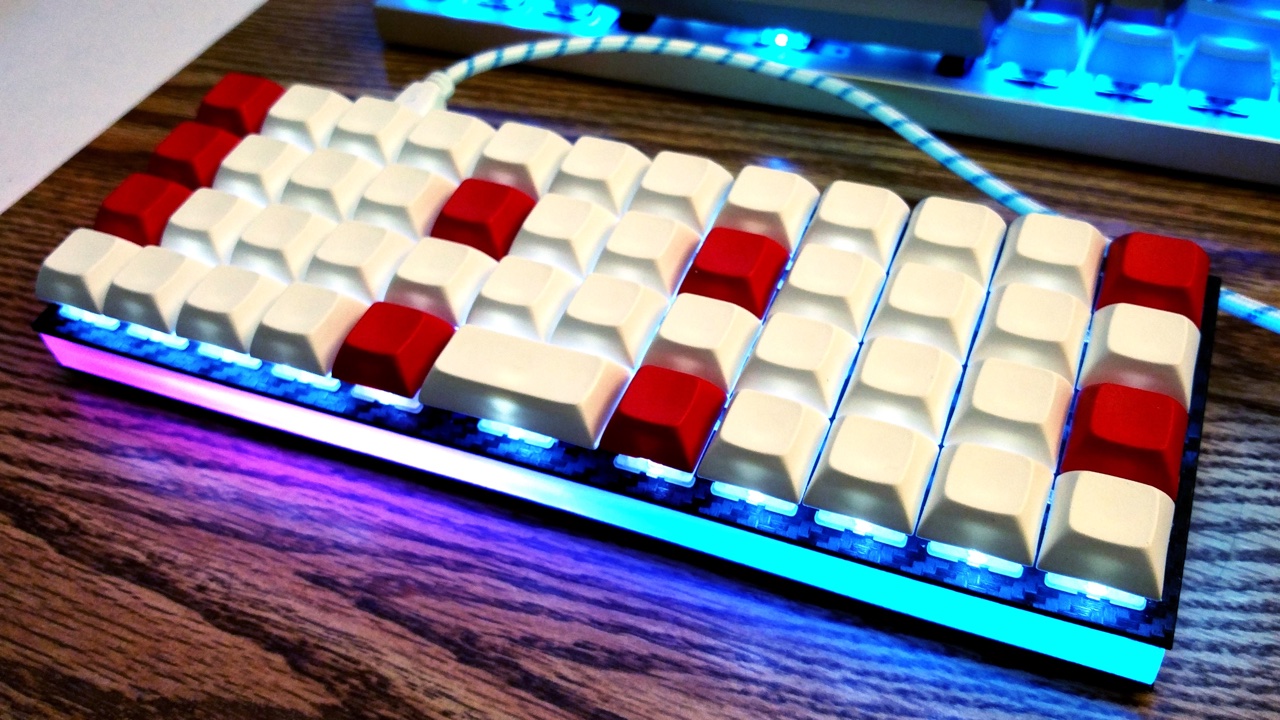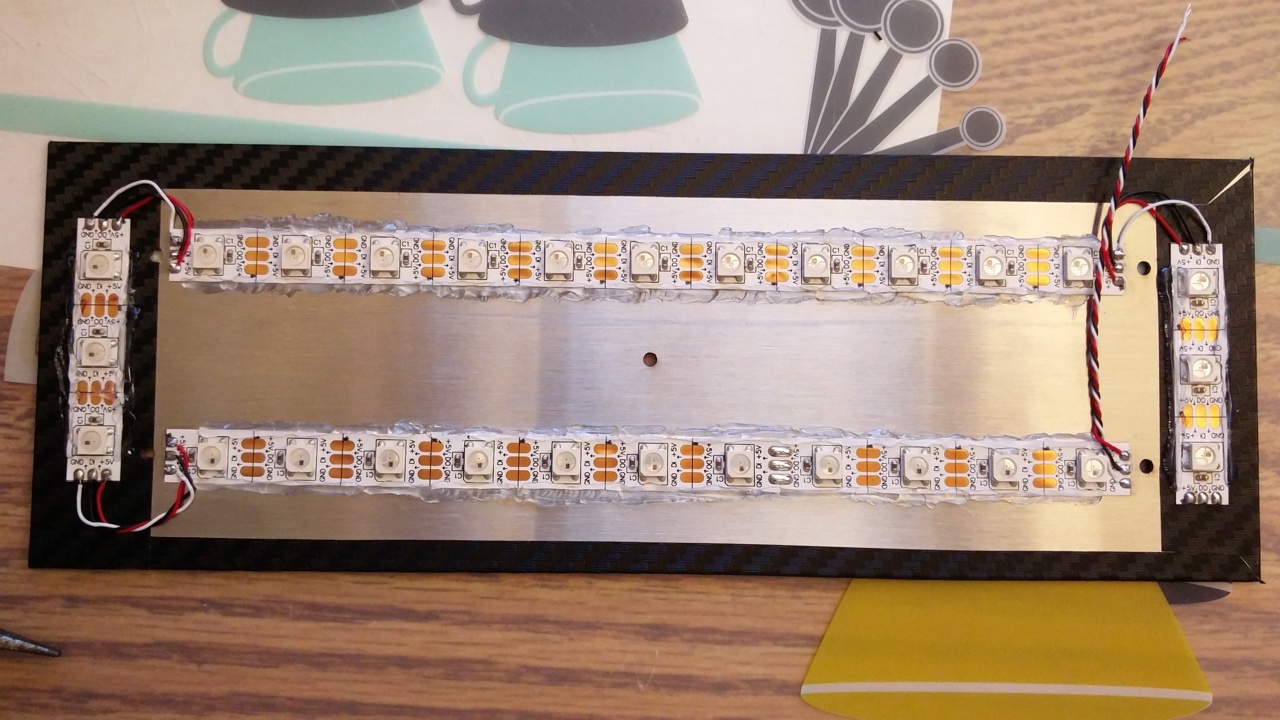## Getting started
-* **If you're looking to customize a keyboard that currently runs QMK or TMK** , find your keyboard's directory under `/keyboard/` and read the README file. This will get you all set up.
+* [BUILD_GUIDE.md](BUILD_GUIDE.md) contains instructions to set up a build environment, build the firmware, and deploy it to a keyboard. Once your build environment has been set up, all `make` commands to actually build the firmware must be run from a folder in `keyboard/`.
+* If you're looking to customize a keyboard that currently runs QMK or TMK, find your keyboard's directory under `keyboard/` and run the make commands from there.
* If you're looking to apply this firmware to an entirely new hardware project (a new kind of keyboard), you can create your own Quantum-based project by using `./new_project.sh <project_name>`, which will create `/keyboard/<project_name>` with all the necessary components for a Quantum project.
You have access to a bunch of goodies! Check out the Makefile to enable/disable some of the features. Uncomment the `#` to enable them. Setting them to `no` does nothing and will only confuse future you.
KC_PIPE |
KC_COLN :
-`MT(mod, kc)` - is *mod* (modifier key - MOD_LCTL, MOD_LSFT) when held, and *kc* when tapped. In other words, you can have a key that sends Esc (or the letter O or whatever) when you tap it, but works as a Control key or a Shift key when you hold it down.
+`MT(mod, kc)` - is *mod* (modifier key - MOD_LCTL, MOD_LSFT) when held, and *kc* when tapped. In other words, you can have a key that sends Esc (or the letter O or whatever) when you tap it, but works as a Control key or a Shift key when you hold it down.
These are the values you can use for the `mod` in `MT()` (right-hand modifiers are not available):
We've added shortcuts to make common modifier/tap (mod-tap) mappings more compact:
- * `CTL_T(kc)` - is LCTL when held and *kc* when tapped
- * `SFT_T(kc)` - is LSFT when held and *kc* when tapped
- * `ALT_T(kc)` - is LALT when held and *kc* when tapped
- * `GUI_T(kc)` - is LGUI when held and *kc* when tapped
+ * `CTL_T(kc)` - is LCTL when held and *kc* when tapped
+ * `SFT_T(kc)` - is LSFT when held and *kc* when tapped
+ * `ALT_T(kc)` - is LALT when held and *kc* when tapped
+ * `GUI_T(kc)` - is LGUI when held and *kc* when tapped
* `ALL_T(kc)` - is Hyper (all mods) when held and *kc* when tapped. To read more about what you can do with a Hyper key, see [this blog post by Brett Terpstra](http://brettterpstra.com/2012/12/08/a-useful-caps-lock-key/)
* `LCAG_T(kc)` - is CtrlAltGui when held and *kc* when tapped
* `MEH_T(kc)` - is like Hyper, but not as cool -- does not include the Cmd/Win key, so just sends Alt+Ctrl+Shift.
-### Temporarily setting the default layer
+### Temporarily setting the default layer
`DF(layer)` - sets default layer to *layer*. The default layer is the one at the "bottom" of the layer stack - the ultimate fallback layer. This currently does not persist over power loss. When you plug the keyboard back in, layer 0 will always be the default. It is theoretically possible to work around that, but that's not what `DF` does.
case 0: // this would trigger when you hit a key mapped as M(0)
if (record->event.pressed) {
return MACRO( I(255), T(H), T(E), T(L), T(L), W(255), T(O), END ); // this sends the string 'hello' when the macro executes
- }
+ }
break;
}
return MACRO_NONE;
So above you can see the stroke interval changed to 255ms between each keystroke, then a bunch of keys being typed, waits a while, then the macro ends.
-Note: Using macros to have your keyboard send passwords for you is a bad idea.
+Note: Using macros to have your keyboard send passwords for you is possible, but a bad idea.
-### Additional keycode aliases for software-implemented layouts (Colemak, Dvorak, etc)
+### Advanced macro functions
+
+To get more control over the keys/actions your keyboard takes, the following functions are available to you in the `action_get_macro` function block:
+
+* `record->event.pressed`
+
+This is a boolean value that can be tested to see if the switch is being pressed or released. An example of this is
+
+```c
+if (record->event.pressed) {
+ // on keydown
+} else {
+ // on keyup
+}
+```
+
+* `register_code(<kc>);`
+
+This sends the `<kc>` keydown event to the computer. Some examples would be `KC_ESC`, `KC_C`, `KC_4`, and even modifiers such as `KC_LSFT` and `KC_LGUI`.
+
+* `unregister_code(<kc>);`
+
+Parallel to `register_code` function, this sends the `<kc>` keyup event to the computer. If you don't use this, the key will be held down until it's sent.
+
+* `layer_on(<n>);`
+
+This will turn on the layer `<n>` - the higher layer number will always take priority. Make sure you have `KC_TRNS` for the key you're pressing on the layer you're switching to, or you'll get stick there unless you have another plan.
+
+* `layer_off(<n>);`
+
+This will turn off the layer `<n>`.
+
+* `clear_keyboard();`
+
+This will clear all mods and keys currently pressed.
+
+* `clear_mods();`
+
+This will clear all mods currently pressed.
+
+* `clear_keyboard_but_mods();`
+
+This will clear all keys besides the mods currently pressed.
+
+#### Timer functionality
+
+It's possible to start timers and read values for time-specific events - here's an example:
+
+```c
+static uint16_t key_timer;
+key_timer = timer_read();
+if (timer_elapsed(key_timer) < 100) {
+ // do something if less than 100ms have passed
+} else {
+ // do something if 100ms or more have passed
+}
+```
+
+It's best to declare the `static uint16_t key_timer;` outside of the macro block (top of file, etc).
+
+## Additional keycode aliases for software-implemented layouts (Colemak, Dvorak, etc)
Everything is assuming you're in Qwerty (in software) by default, but there is built-in support for using a Colemak or Dvorak layout by including this at the top of your keymap:
- #include "keymap_<layout>.h"
+ #include <keymap_extras/keymap_colemak.h>
+
+If you use Dvorak, use `keymap_dvorak.h` instead of `keymap_colemak.h` for this line. After including this line, you will get access to:
-Where <layout> is "colemak" or "dvorak". After including this line, you will get access to:
-
* `CM_*` for all of the Colemak-equivalent characters
* `DV_*` for all of the Dvorak-equivalent characters
-
-These implementations assume you're using Colemak or Dvorak on your OS, not on your keyboard - this is referred to as a software-implemented layout. If your computer is in Qwerty and your keymap is in Colemak or Dvorak, this is referred to as a firmware-implemented layout, and you won't need these features.
+
+These implementations assume you're using Colemak or Dvorak on your OS, not on your keyboard - this is referred to as a software-implemented layout. If your computer is in Qwerty and your keymap is in Colemak or Dvorak, this is referred to as a firmware-implemented layout, and you won't need these features.
To give an example, if you're using software-implemented Colemak, and want to get an `F`, you would use `CM_F` - `KC_F` under these same circumstances would result in `T`.
First you need to select a modifier combination that is not in use by any of your programs.
CtrlAltWin is not used very widely and should therefore be perfect for this.
There is a macro defined for a mod-tab combo `LCAG_T`.
-Add this mod-tab combo to a key on your keyboard, e.g.: `LCAG_T(KC_TAB)`.
+Add this mod-tab combo to a key on your keyboard, e.g.: `LCAG_T(KC_TAB)`.
This makes the key behave like a tab key if pressed and released immediately but changes it to the modifier if used with another key.
In the default script of AutoHotkey you can define custom hotkeys.
- <^<!<#a::Send, ä
- <^<!<#<+a::Send, Ä
+ <^<!<#a::Send, ä
+ <^<!<#<+a::Send, Ä
The hotkeys above are for the combination CtrlAltGui and CtrlAltGuiShift plus the letter a.
AutoHotkey inserts the Text right of `Send, ` when this combination is pressed.
+
+## RGB Under Glow Mod
+
+
+
+Here is a quick demo on Youtube (with NPKC KC60) (https://www.youtube.com/watch?v=VKrpPAHlisY).
+
+For this mod, you need an unused pin wiring to DI of WS2812 strip. After wiring the VCC, GND, and DI, you can enable the underglow in your Makefile.
+
+ RGBLIGHT_ENABLE = yes
+
+Please note that the underglow is not compatible with MIDI functions. So you cannot enable both of them at the same time.
+
+Please add the following options into your config.h, and set them up according your hardware configuration.
+
+ #define ws2812_PORTREG PORTF
+ #define ws2812_DDRREG DDRF
+ #define ws2812_pin PF4
+ #define RGBLED_NUM 14 // Number of LEDs
+ #define RGBLIGHT_HUE_STEP 10
+ #define RGBLIGHT_SAT_STEP 17
+ #define RGBLIGHT_VAL_STEP 17
+
+The firmware supports 5 different light effects, and the color (hue, saturation, brightness) can be customized in most effects. To control the underglow, you need to modify your keymap file to assign those functions to some keys/key combinations. For details, please check this keymap. `keyboard/planck/keymaps/yang/keymap.c`
+
+### WS2812 Wiring
+
+
+
+Please note the USB port can only supply a limited amount of power to the keyboard (500mA by standard, however, modern computer and most usb hubs can provide 700+mA.). According to the data of NeoPixel from Adafruit, 30 WS2812 LEDs require a 5V 1A power supply, LEDs used in this mod should not more than 20.
+
+## Safety Considerations
+
+You probably don't want to "brick" your keyboard, making it impossible
+to rewrite firmware onto it. Here are some of the parameters to show
+what things are (and likely aren't) too risky.
+
+- If a keyboard map does not include RESET, then, to get into DFU
+ mode, you will need to press the reset button on the PCB, which
+ requires unscrewing some bits.
+- Messing with tmk_core / common files might make the keyboard
+ inoperable
+- Too large a .hex file is trouble; `make dfu` will erase the block,
+ test the size (oops, wrong order!), which errors out, failing to
+ flash the keyboard
+- DFU tools do /not/ allow you to write into the bootloader (unless
+ you throw in extra fruitsalad of options), so there is little risk
+ there.
+- EEPROM has around a 100000 write cycle. You shouldn't rewrite the
+ firmware repeatedly and continually; that'll burn the EEPROM
+ eventually.
+
\ No newline at end of file